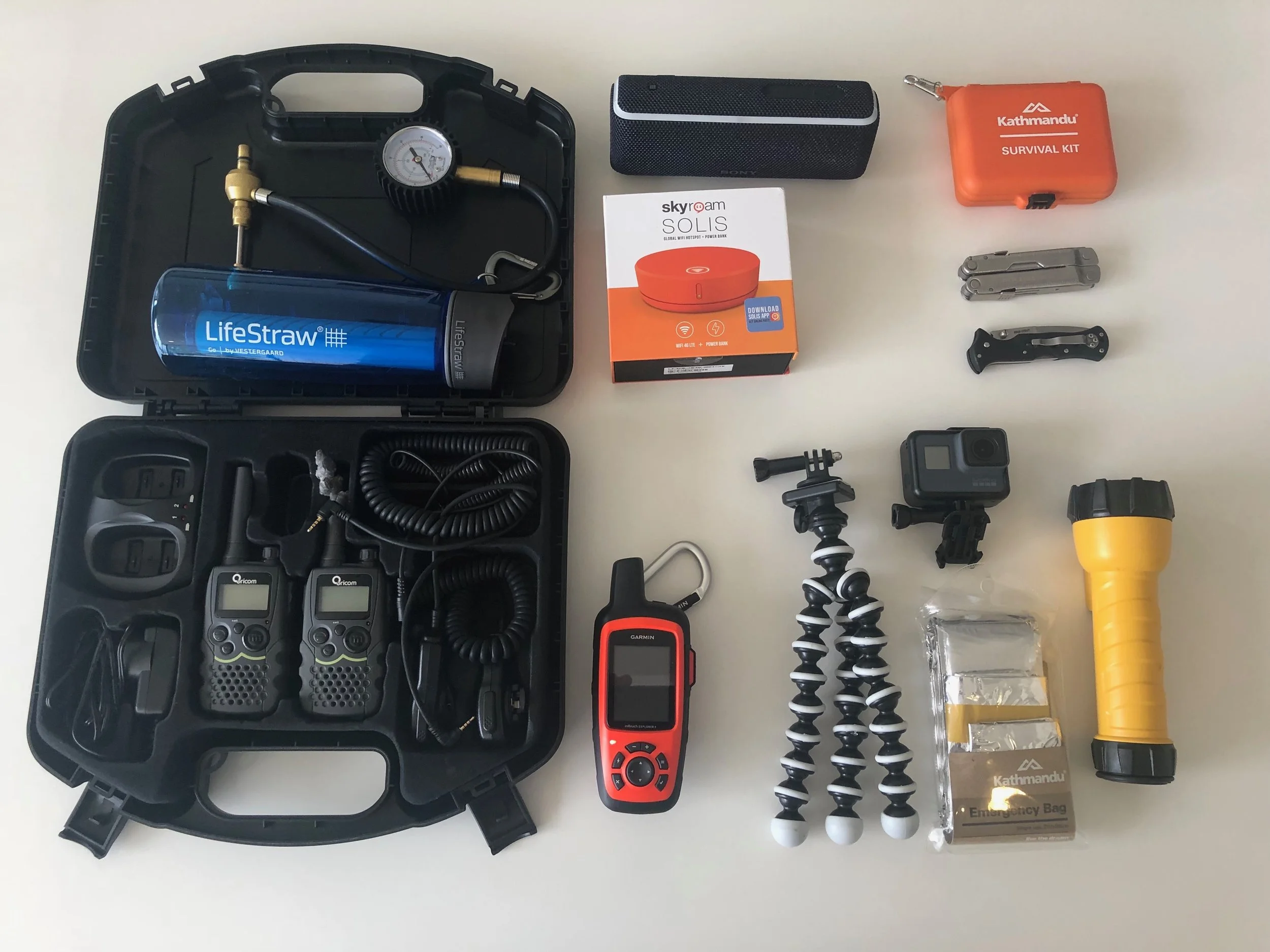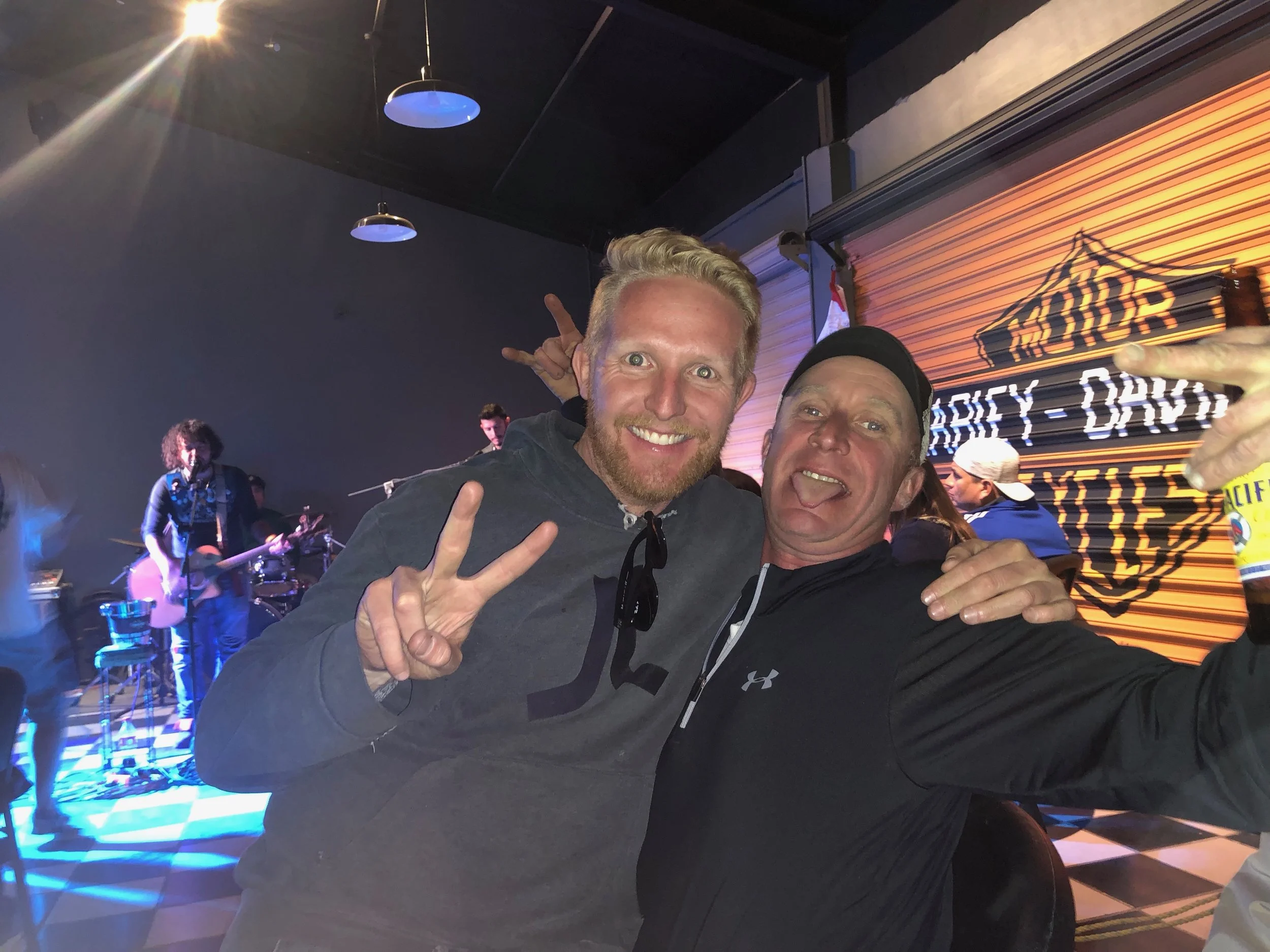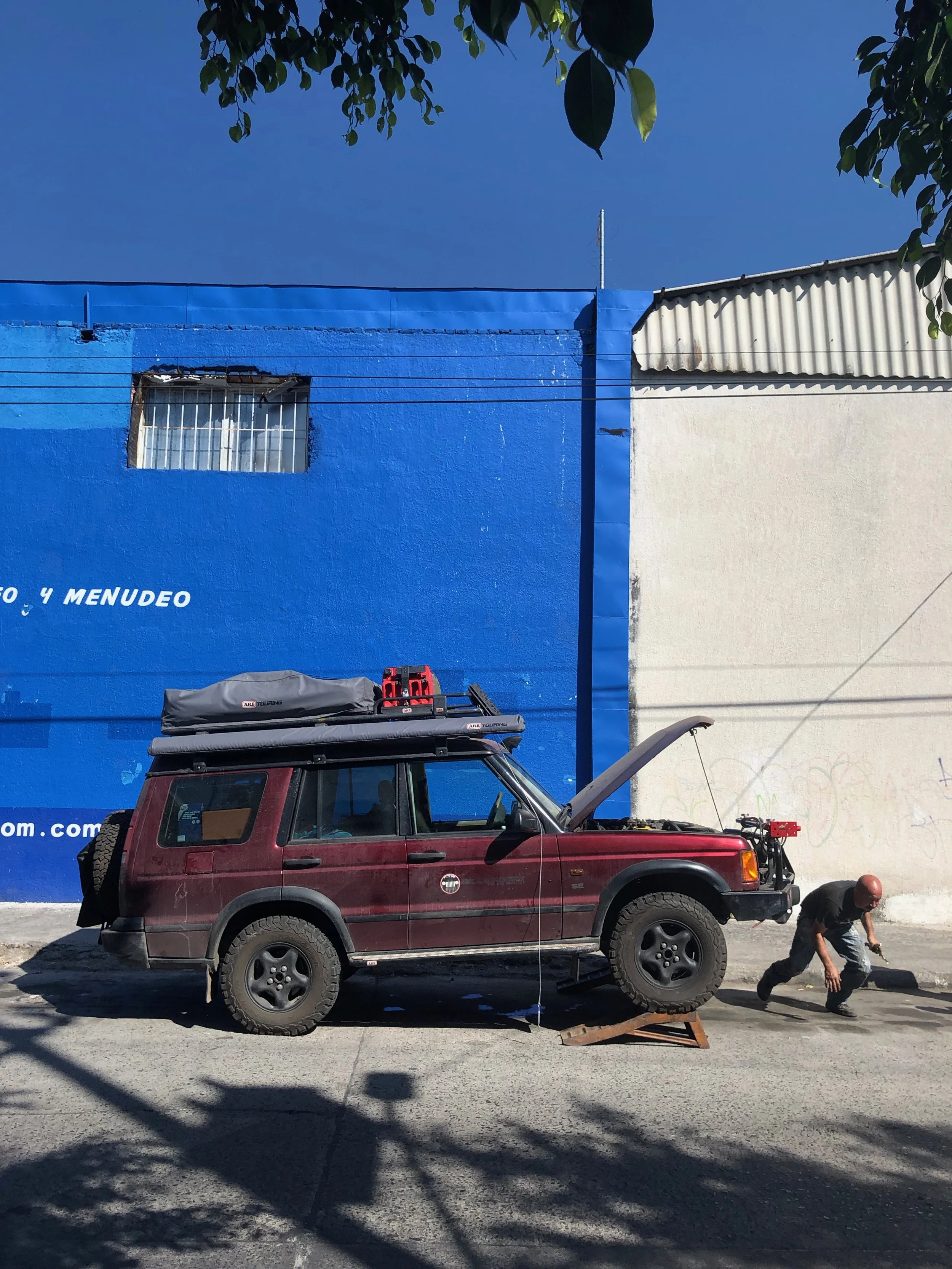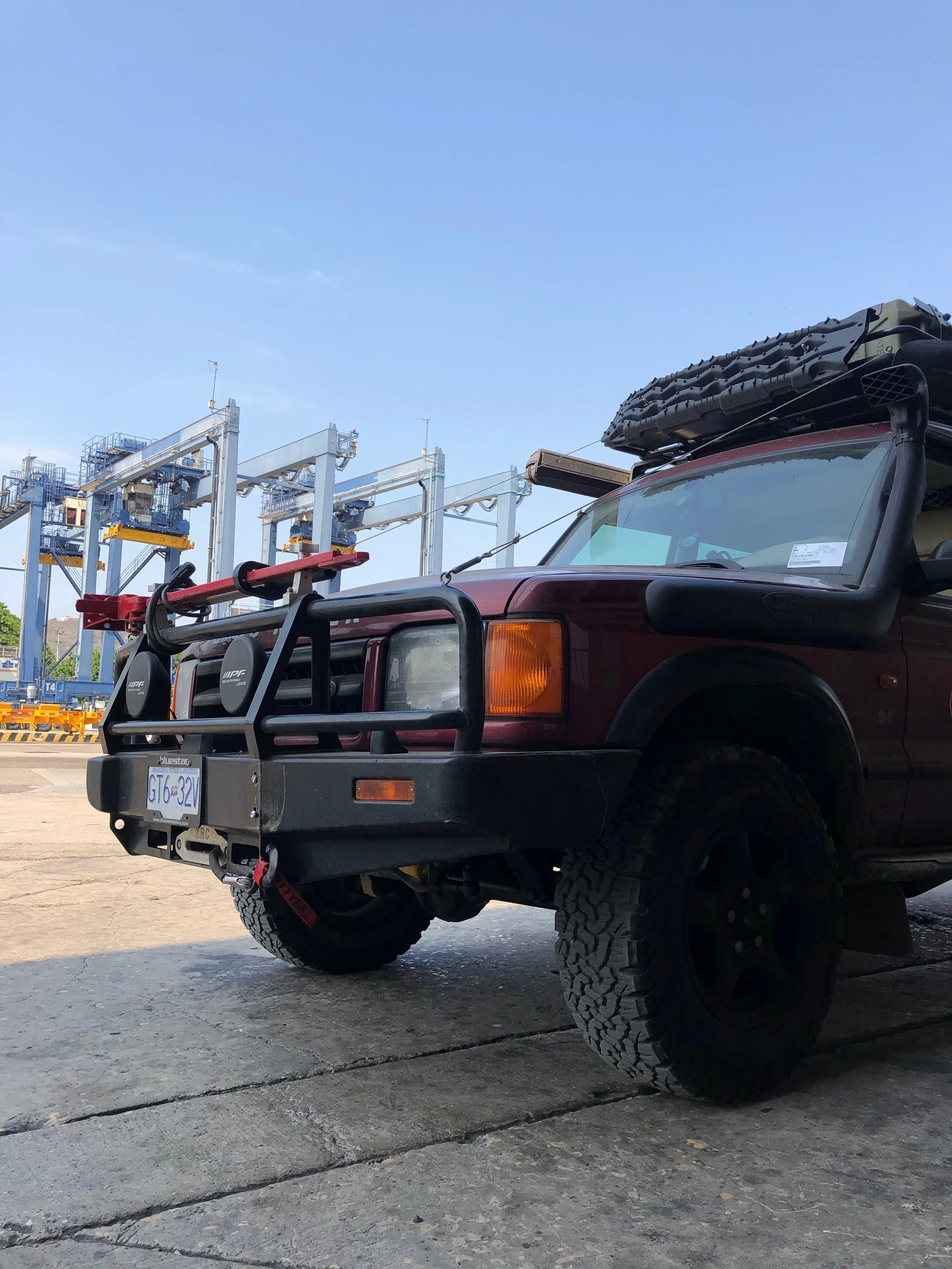Equipment
One of the most time-consuming elements of planning for this adventure has been trying to figure out why equipment I need to get me through. I love my gear and I’ve probably over-done it but I want to be prepared for everything this journey has to throw at me. So, here’s a list of what I’m bringing along including a bit of rationale for some of the more considered purchases.
Note that I’m trying to save car accessories for another blog because that’s a whole story within itself.
This post may be a bit dry for some but hopefully useful for travellers planning a similar journey or the preppers amongst us.
GPS / Satellite phone / Maps
One of the most important decisions was how to navigate the route. I quickly learned that it’s difficult and expensive to buy all the maps for any one GPS device. They typically come loaded with just Australia or just Canada & US (depending on where you purchase the device). GPS maps are updated irregularly and roads and tollways in Central and South America seem to change regularly from my research. So, after some investigating I, shelved the idea of a TomTom / Garmin as my standalone map solution.
Knowing that Google Maps typically has the most up-to-date map data and can be cached, I ultimately decided that using my phone’s Google Maps app, caching areas when I have data and relying on real-time traffic data when I had an internet connection on the go was the best way forward.
As a backup, I bought actual physical paper maps for each country I would travel through.
So while this solved my navigation problem, I still wanted a solution for emergencies so I could send an SOS if needed. I became aware of a few devices that allowed text via satellite and started to pick through which would be most suitable.
One of the mistakes I made was to jump onto the first thing I found which was a Kickstarter-inspired satellite communication device called Somewear. Without reading properly, I bought the device not knowing that they were only just starting to ship first product. For something so crucial (my safety), I quickly realised that I didn’t want to trust an early-release beta product. At this point, it remains to be seen if the device will arrive before my trip begins but I’ve already moved on and written off the cost.
After doing some proper research and talking to a salesperson at Kathmandu (outdoor store), I came across the Garmin Inreach Explorer+. It’s a GPS device that has a GPS mapping and satellite-based messaging, as well as an SOS function. It requires a subscription and isn’t the cheapest product but the company is a leader in wearable, GPS and outdoor technology. They also have a suite of features like medical evacuation plans on the back of their SOS function. There’s also a nice to have feature where I can publish my live location on a custom webpage for those wanting to follow my journey. While it’s not yet showing my location, at some point you’ll be able to track my route on this link - https://aus-share.inreach.garmin.com/share/longdrivesouth
Roaming internet device
Knowing that I’d want to have data for as much of the route as possible, a Telstra roaming plan with my Australian phone was only going to cover me for a little over half of my trip, so I investigated roaming wifi devices.
My research led me to two options, the Roaming Man U2 Global 4G Wi-Fi Hotspot and Solis Skyroam. Both offered much better coverage than my Telstra roaming plan. For the 17 countries on my list (USA, Canada, Mexico, Belize, Guatemala, Honduras, Nicaragua, Costa Rica, Panama, Colombia, Ecuador, Peru, Bolivia, Chile, Argentina, Paraguay and Uruguay), both products covered nearly all with Belize and Paraguay being the exceptions (and Roaming Man not covering Honduras).
Ultimately, I went with the Skyroam. Reviews suggested data speeds weren’t as good but the pricing was slightly better ($99/month for unlimited data) and the extra coverage in Honduras tipped it over the edge for me.
Firearms?
I have two major elements of danger on this trip that I’m planning for. Bears and people (banditos & drug cartel types). So, I wanted to consider whether arming myself for the adventure was the right move. A shotgun is recommended for protecting yourself in a bear encounter and I figured a handgun may be a useful companion in a dangerous Central American encounter.
Researching this thoroughly, I concluded that the transportation of a firearm between 17 countries was going to be an absolute nightmare. Transporting a person and a vehicle between all these border crossings is hard enough, let alone the declaration and importation of a firearm. And assuming it was something that I wanted to do, cross-checking the legality of different guns in 17 different countries was just not viable.
Thinking it through further, I decided that pulling a gun in a dangerous situation escalates things further. I simply don’t want to kill a bear or a person. Common sense prevailed and (perhaps unlike many people in the world) I came to the sensible conclusion that guns make things less safe rather than more.
Protection
So, without firearms, bear mace was the logical deterrent for a dangerous encounter with a bear (or a bandito). For those who aren’t familiar with it, bear mace is a powerful form of pepper spray carried my many Canadian outdoorsy types in bear populated areas.
I’ll also take machete and hunting knife but really these are less for protection as much as they are practical implements in my travels.
Water
Water is simple but crucial consideration for this journey. There are two elements to drinkable water – storage and purification.
From a storage perspective, I’ve opted for a simple solution. Two 20-litre jerry cans. One on the roof and one in the cab (the one on the top will freeze, hopefully the one inside doesn’t). This should provide more than enough drinking water as well as water for washing up and showering. I also have a solar shower – basically a black bag that you fill with water and leave in the sun to warm up. And a Camelbak for hydration on hikes.
From a purification standpoint, I have a ton of Aquatabs (water purification tablets). I also have a LifeStraw which will let me drink from rivers and streams if I need to. If anyone has more suggestions about water treatment, let me know.
And failing that, I’m taking a very large amount of Imodium (loperamide) and a diarrhoea kit if my water treatment doesn’t work.
Medicine
In terms of immunisations, I had the following:
Yellow fever
Typhoid
Rabies (series of three injections)
From various past travels, I’ve had pretty much every jab there is so I’m good on the Heps, Japanese Encephalitis, Tetanus, etc. All in, this was over AUD$600 worth of visits to the doctor.
Malaria is also a major consideration for Central and South America so I have an ample supply of Doxycycline to get me through.
And of course, a first aid kit in case of accidents.
Batteries
Given my communication, navigation and entertainment requirements all rely on power, I have a few batteries:
Mophie XXL 20,000mAh: Enough to give my iPhone about 100 hours of use and charge all my USB-powered accessories
Dual-battery system in the car: To power the fridge and as a redundancy to start the car if my first battery goes, I have two batteries in a custom mounting tray in the engine bay
Skyroam: My roaming internet device also acts as backup power supply (6,000mAh capacity)
Drone
A relatively last-minute decision but thinking about all the beautiful scenery I have to look forward to, I’m going to take the plunge and grab a drone for the journey. Talking to my cousin who is a professional photographer, I quickly settled on the DJI Mavic Pro as the right balance between price, features and usability.
GoPro
I’d resisted buying a GoPro for many years, figuring it would be a gadget that gets used a few times and then proceeds to gather dust. But for this trip, I figured that I’ve finally found the excuse I need. I went with the Hero5, opting to save a little money and not go with the latest model.
Chainsaw
Sourcing wood for campfires and dispensing with fallen trees across trails will be crucial. Initially content with a handsaw, I made a last-minute decision to pick up a chainsaw. The Husqvarna 445e 18” is my weapon of choice. It was a line-ball between the Husqi and the Stihl but the former seems easier to pick up at Canadian Tire (my prepping store of choice when I land in Vancouver).
Documentation:
For border crossings, copies of the following (translated into Spanish and notarized where necessary):
Passport (Australian and US)
Vehicle registration
Vehicle insurance
Vehicle title
Driver’s license
International driver’s license
Birth certificate
Yellow Book (vaccinations)
Inventory list
Bank statement (proof of funds required for some border crossings)
And the long list of items I’ll otherwise be taking with me:
Car:
Road safety triangles: Required equipment in Honduras
Fire extinguisher: Also required in Honduras
Tie downs for the roof-mounted stuff
Spare oil
Coolant
Hose clamps
Jumper leads
Tool kit
Duct tape
Cable ties
Funnel
Fuel containers (3x 20 litre)
Water containers (2x 20 litre)
Compressor (for inflating tires)
Tire pressure gauge & deflator
Snatch straps and tow ropes for recovery situations
Padlocks for my fuel containers
Hi-lift jack
Chains (for the snow)
Camping / outdoor:
Rooftop tent
Sleeping bag: Rated to -15C
Pillow
Camp chair
Single burner gas stove for cooking & coffee
Plate and bowls
Mugs
Axe
Fishing rods
Tackle box
Fire lighters
Cigarette lighters
Electrical:
Portable Bluetooth speaker
Phone cradle
Cigarette power adaptor
GoPro mounts and accessories
Laptop
Chargers
International adaptors (basically all of them for 17 countries)
Other:
Food
Scotch
Beer
Wine
Coffee maker
Sunscreen
Sunglasses
Mosquito repellant
Mosquito net
Gold kangaroo pins (to smooth over bribe situations with corrupt police)
Scuba diving log book
Can opener & bottle opener
Head torch
Lamp
Water proof bag
Leatherman multi-tool
Compass
And then obviously clothes (for cold and warm climate) and toiletries








